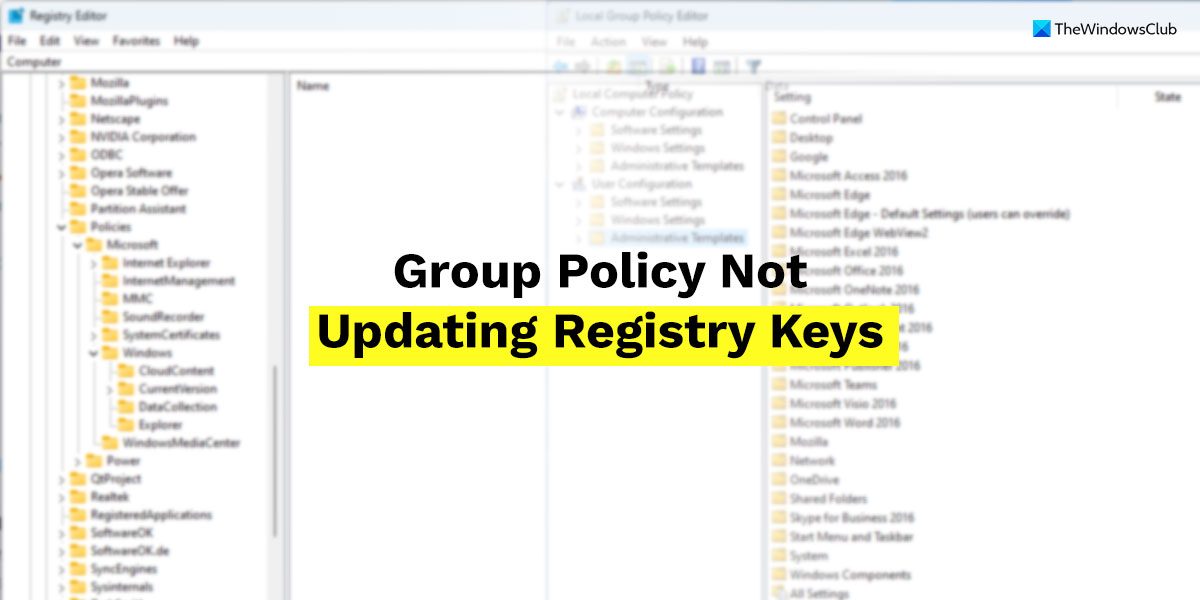Group Policy is not creating or updating Registry keys
If Group policy is not creating or updating Registry keys on your Windows computer, follow these solutions: To learn more about these solutions, continue reading.
1] Force update Group Policy
Although it is not a permanent solution, it works pretty well. At times, the Local Group Policy Editor might not update or create the Registry key or value because it fails to fetch the change. Most times, it updates the change immediately. However, at times, it might not do that due to some reasons. In such situations, you can force update the Local Group Policy Editor. To force update Group Policy in Windows 11/10, follow these steps:
Search for powershell in the Taskbar search box.Click on the Run as Administrator option.Click the Yes button in the UAC prompt.Enter this command: gpupdate /force
Next, you can check the Registry Editor for the change. Note: Alternatively, you can use the Windows PowerShell instance in the Windows Terminal as well. To open Windows Terminal with administrator permission, you can press Win+X, select Terminal (Admin), and click the Yes button in the UAC prompt.
2] Check for permission
Some Registry keys need a higher level of permission to be created or manipulated. In some cases, users can change the Group Policy setting but cannot do the same in the Registry Editor. If so, you need to check for the proper permission in order to obtain the change in the respective file. You can follow this guide to take full control or ownership of Registry keys.
3] Use System File Checker
SFC or System File Checker is an in-built command-line utility that allows users to find and fix corrupt system files. If the aforementioned issue is appearing because of corrupt files, you can get rid of that issue using the sfc.exe utility.
4] Scan the computer using a malware removal tool
At times, this problem might occur due to malware or adware attack. If your computer has adware, it might alter files and block Registry Editor from receiving the changes. If so, you need to scan your PC with a standalone on-demand removal tool. For your information, you can use AdwCleaner or a standalone Dr.WEB CureIt.
5] Use System Restore point
It is probably the last thing you can do in order to get rid of the issue, as mentioned above. You can follow this guide to use System Restore point in Windows.
Does GPO override registry key?
Yes, the Local Group Policy Editor overrides keys and values automatically in the Registry Editor. Whether you use Windows 11, Windows 10, or any other older version, you can find the same policy everywhere. No matter whether it is a change of value or a new key, it updates the Registry file automatically and immediately. Read: How to fix or repair corrupted or damaged Registry in Windows
How do I push registry changes in Group Policy?
As of now, you cannot enable or disable Registry changes in the Local Group Policy Editor. However, the opposite thing is possible in Windows. In other words, you can push Group Policy changes in the Registry Editor. No matter whether you use Windows 11, Windows 10, or any other version, you can get the job done. There is nothing you need to do additionally since this process happens in automation. Read: How to repair a corrupt Group Policy in Windows.
